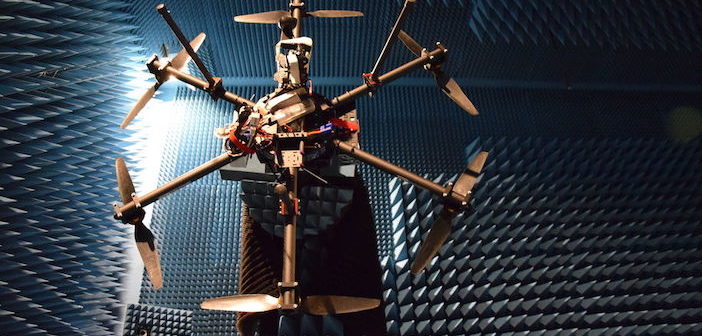
According to aerospacetestinginternational.com, researchers from Finland, Belgium and the USA have measured the radar cross sections of drones to establish an open-database of known types and improve drone detection methods.
With unmanned craft increasingly being used across society and industry for a variety of purposes, they can cause public harm and be used maliciously. The researchers hope the database may be used to help design radar systems and new drone detection techniques to improve public safety.
Radar is commonly used to monitor the presence of drones and prevent possible threats. However, unmanned craft are manufactured in a range of sizes, shapes and often use composite materials, making them challenging to detect with radar.
Researchers from Aalto University in Finland, UCLouvain in Belgium, and New York University, USA have amassed extensive radar measurement data of commercially available and custom-built drone models’ Radar Cross Section (RCS), which indicates how the target reflects radio signals. The RCS signature can help to identify the size, shape and the material of the craft.
Researcher Vasilii Semkin from Aalto University said, “We measured drones’ RCS at multiple 26-40 GHz millimetre-wave frequencies to better understand how they can be detected and to investigate the difference between drone models and materials in terms of scattering radio signals.
“We believe our results will be a starting point for a future uniform drone database. Therefore, all results are publicly available along with our research paper.”
This publicly accessible measurement data could be employed in the development of radar systems, as well as machine learning algorithms for more complex identification. This would increase the probability of detecting drones and reducing fault detections.
Semkin continued, “There is an urgent need to find better ways to monitor drone use. We aim to continue this work and extend the measurement campaign to other frequency bands, as well as for a larger variety of drones and different real-life environments.” Researchers are now studying the possibility that 5G base stations might be used in the future for surveillance.
Professor Ville Viikarai from Aalto University’s Department of Electronics and Nanoengineering added, “We are developing millimetre-wave wireless communication technology, which could also be used in sensing the environment like a radar. With this technology, 5G-base stations could detect drones, amongst other things.”
(Image: Vasilii Semkin)
For visual information


